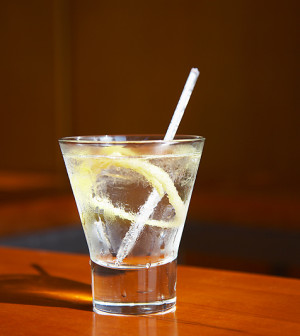- Navigating Your Midlife Crisis: Embracing New Possibilities
- City Raccoons Showing Signs of Domestication
- Mapping the Exposome: Science Broadens Focus to Environmental Disease Triggers
- One Week Less on Social Media Linked to Better Mental Health
- Your Brain Changes in Stages as You Age, Study Finds
- Some Suicide Victims Show No Typical Warning Signs, Study Finds
- ByHeart Formula Faces Lawsuits After Babies Sickened With Botulism
- Switch to Vegan Diet Could Cut Your Greenhouse Gas Emissions in Half
- Regular Bedtime Does Wonders for Blood Pressure
- Dining Alone Could Mean Worse Nutrition for Seniors
Teenage Girls Now Try Alcohol Before Boys Do: Study

It’s probably not a milestone that will do many feminists proud, but teenage girls in the United States now start to drink alcohol sooner than boys do, a new study shows.
“This is becoming a public health issue,” said lead researcher Dr. Hui Cheng, an adjunct assistant professor at Michigan State University.
“We really don’t know why girls are surpassing boys — that’s the next question we want to answer,” she said.
Among the possible explanations, according to Cheng: drinking has become more socially acceptable. Also, because girls typically reach puberty sooner, some start engaging in risky behaviors such as drinking earlier. It might also be that younger girls are spending time with older boys, “so there is more exposure to drinking,” she added.
Cheng also pointed to advertising that targets girls by promoting sweet, fruit-flavored drinks, such as wine coolers, which are popular among underage girls who drink.
Most strategies to curb underage drinking are aimed at boys, Cheng said. But given these new findings, more policies are needed to reduce underage drinking among girls, she said.
For the study, Cheng and her colleagues collected data on about 390,000 U.S. teens and young adults aged 12 to 24 who took part in government surveys on drug use and health from 2002 to 2013.
The researchers found that in mid-adolescence, girls are more likely to start drinking than boys. After age 19, boys went on to drink more than girls, the researchers added.
However, a 2015 report from the U.S. Centers for Disease Control and Prevention found adult women are catching up to men when it comes to using and abusing alcohol.
“We found that over that period of time, differences in measures such as current drinking, number of drinking days per month, reaching criteria for an alcohol use disorder and driving under the influence of alcohol in the past year, all narrowed for females and males,” report author Aaron White, senior scientific advisor to the director of the U.S. National Institute on Alcohol Abuse and Alcoholism, said at the time.
“Males still consume more alcohol, but the differences between men and women are diminishing,” White added.
One expert agreed.
Drinking is no longer largely a male problem, said Dr. James Garbutt, a professor of psychiatry and medical director of the alcohol and substance abuse program at the University of North Carolina School of Medicine, in Chapel Hill.
“For years it has been ‘known’ that men are more likely to drink and have alcohol problems than women,” he said.
However, Cheng’s study reveals that girls are more likely than males to start drinking at an earlier age, “so there is no female protective factor at work,” Garbutt said.
The new findings suggest that efforts are needed to educate adolescent girls as well as boys about the risks of starting to drink at a young age, Garbutt said.
“This will need to be done in a smart way, as most adolescents tend to ignore warnings offered by adults,” he said.
“We do know that starting to drink early is a risk factor for developing alcohol use disorders as one gets older. So, if we can figure out good strategies to address this for both girls and boys we could potentially reduce the number of folks with alcohol use disorders — a very positive thing for all of us,” Garbutt said.
The new report was published online recently in the journal Alcoholism Clinical & Experimental Research.
More information
For more on underage drinking, visit the U.S. National Institute on Alcohol Abuse and Alcoholism.
Source: HealthDay
Copyright © 2025 HealthDay. All rights reserved.










